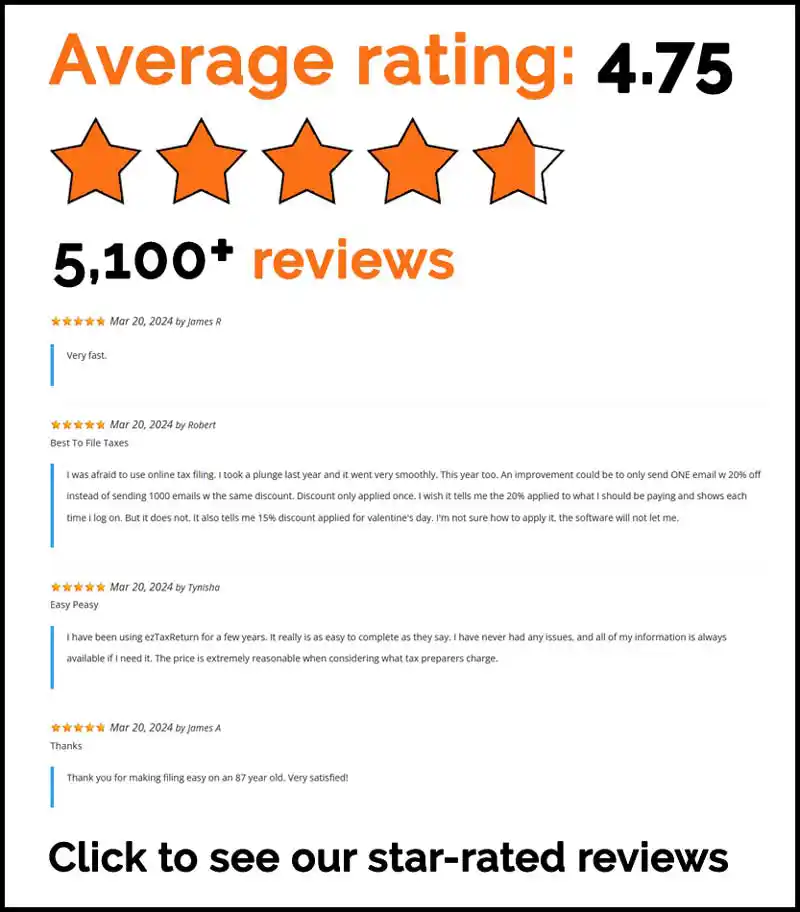Got clutter lying around that could turn into cash? It’s never been easier to sell stuff online, whether you’re cleaning out your closet, upgrading your electronics, or just trying to make some extra money.
But not every online selling platform is created equal. If you’re looking for the best places to sell stuff online, it’s important to match the item you’re selling with the right audience. Some are great for local sales, others shine for niche items like vintage sneakers or gaming gear. This guide breaks down the best places to sell your stuff online in 2025, with real pros and cons so you know exactly where to list and why.
1. Facebook Marketplace
Facebook Marketplace is a top choice for local sales due to its vast user base and ease of use. Sellers can list items directly from their Facebook account with no listing or selling fees, maximizing profits. The integrated Messenger feature facilitates swift communication with potential buyers, enhancing the likelihood of quick sales. The platform’s built-in audience increases exposure to interested buyers.
Best for: Local sales, furniture, electronics, home goods
Pros:
- No selling fees
- Fast communication through Messenger
- Huge local reach (everyone’s already on Facebook)
- Built-in audience makes it easier to find buyers quickly
Cons:
- Buyers can be flaky or ghost after showing interest
- Safety risks if not meeting in a public place
Pro Tip: Always meet in a safe, public location and bring someone with you if you’re selling high-ticket items.
2. OfferUp
OfferUp is popular for its simplicity and effectiveness in reaching local buyers. Its user-friendly app allows quick item listings with high-quality photos and details, attracting interested buyers. The platform’s rating system builds seller credibility, and its algorithm promotes local listings for fast sales, ideal for sellers wanting quick transactions without shipping hassles.
However, OfferUp’s effectiveness varies by region, limiting reach in some areas. The platform requires independent transaction management, increasing scam risks, and aggressive buyer negotiations can challenge sellers seeking desired prices. Buyers also bear shipping costs, potentially deterring some.
Best for: Local selling, small electronics, tools, furniture
Pros:
- User-friendly app interface
- Ratings and reviews help weed out sketchy buyers
- Promotes listings to nearby users
Cons:
- Popular in some regions more than others
- Limited seller protection
- Buyers can negotiate hard or lowball
Pro Tip: Use the “Promote” feature for high-demand items and always vet buyer profiles.
3. eBay
eBay is a versatile platform for selling a wide range of items like collectibles, tech gadgets, and fashion pieces. Its global reach connects sellers with an international audience, increasing sales potential. The platform’s shipping calculator and label printing ease logistics. eBay offers auction and “Buy It Now” formats, providing listing flexibility. Auctions can drive up sale prices, while “Buy It Now” allows immediate purchases at a fixed price.
However, eBay’s fee structure, including a final value fee, can impact profits. Handling returns and competitive pricing can be challenging. Despite these, eBay’s extensive reach and reputation make it a top choice for sellers.
Best for: Collectibles, tech, fashion, refurbished goods
Pros:
- Global audience
- Built-in shipping calculator and label printing
- Auction or “Buy It Now” formats
Cons:
- Seller fees, including the final value fee, can add up (2.5% to 15.3% depending on the category you sell in, plus a per order fee)
- Handling returns can be a pain
- Competitive pricing means lower profits
Pro Tip: Offer free shipping and clear return policies to increase buyer trust and boost rankings.
4. Poshmark
Poshmark is a top online resale platform for fashion items, ideal for selling secondhand clothes, shoes, and accessories. It simplifies the process with prepaid shipping labels and fosters a community-oriented environment through followers and shares, enhancing visibility. Despite its advantages, Poshmark’s fee structure includes a $2.95 flat commission on sales under $15 and a 20% fee on sales over $15, which can affect profits. The fashion-centric focus may limit non-fashion sales, requiring sellers to engage actively to boost visibility.
Best for: Clothing, shoes, accessories (especially brand name)
Pros:
- Trendy, fashion-focused audience
- Prepaid shipping labels included
- Community-oriented (followers, shares)
Cons:
- Flat commission fee of $2.95 on sales under $15
- 20% fee on sales over $15
- Not ideal for non-fashion items
- Requires more engagement (sharing, commenting) to boost visibility
Pro Tip: Take clear, styled photos and use popular hashtags to get featured.
5. Mercari
Mercari is a versatile online marketplace ideal for casual sellers and decluttering. Its user-friendly interface makes listing items easy with high-quality photos and descriptions. Built-in shipping labels simplify logistics, and its national reach connects sellers with a broad audience, increasing the chances of quick sales. Popular among resale enthusiasts, it’s great for selling gadgets, toys, games, and clothing.
However, Mercari charges a 10% seller fee, impacting profits. It lacks the brand recognition of eBay or Facebook, which may affect trust for some buyers. Customer support can be slow, posing challenges in issue resolution. Despite these drawbacks, Mercari is a viable option for reaching a national audience with minimal effort.
Best for: Gadgets, toys, games, clothing
Pros:
- Simple listing process
- Built-in shipping label options
- Can reach a national audience
Cons:
- 10% seller fee
- Less brand recognition than eBay or Facebook
- Slower customer support response times
Pro Tip: Respond to questions quickly and offer bundle deals to increase order size.
As you explore the best places to sell stuff online, it’s important to factor in your comfort level with local meetups versus shipping.
6. Craigslist
Craigslist is a top choice for selling larger items locally without fees or complex setup. It’s ideal for furniture, bikes, and appliances, offering simplicity and a large pool of potential buyers. However, its outdated design and lack of buyer/seller protections increase scam risks. Transactions require independent handling, often needing in-person exchanges.
Best for: Local, larger items like furniture, bikes, and appliances
Pros:
- No listing or selling fees
- No accounts or logins needed
- Simple and fast
Cons:
- Outdated design
- No buyer/seller protections
- Potential for scams
Pro Tip: Include your general location (not address), and never accept checks or wire transfers.
7. Amazon (as a third-party seller)
Amazon is a leading online marketplace for third-party sellers, offering vast reach and a trusted brand to access millions of buyers. It’s ideal for selling books, electronics, and new or lightly used items. Prime shipping options enhance delivery speed, boosting sales. Amazon supports bulk and repeat selling, suitable for those with steady inventory.
However, challenges include a complex setup process and a fee structure with referral and closing fees, which can be high for small sellers. Adhering to strict rules and performance metrics is essential for maintaining customer service standards.
Best for: Books, electronics, new or lightly used items
Pros:
- Trusted brand with millions of shoppers
- Prime shipping options (if eligible)
- Good for bulk or repeat selling
Cons:
- Complex seller setup
- Fees can be high for small sellers
- Strict rules and performance metrics
Pro Tip: Use Fulfilled by Amazon (FBA) only if you plan to scale; casual sellers may do better elsewhere.
8. Swappa
Swappa excels in selling consumer tech like smartphones, tablets, laptops, and smartwatches. Known for safety and trust, it reviews listings to ensure only functional devices are sold. Payments are made via PayPal, adding security. Required photos and serial numbers boost transparency.
Swappa’s limitations include only accepting fully functional devices, which may exclude those with damaged items. The listing process requires more setup than sites like Decluttr, needing detailed info and images. Despite this, Swappa remains a reliable marketplace for tech enthusiasts.
Best for: Smartphones, tablets, laptops, smartwatches, and other consumer tech
Pros:
- Safe and trusted platform for selling tech
- Listings are reviewed and approved by Swappa staff
- Direct deposits via PayPal
Cons:
- 3% seller fees + payment processing fees
- Only accepts fully functional devices
- Must include photos and IMEI/serial numbers
Pro Tip: Price competitively and include accessories or original packaging to help your listing stand out.history.
9. Etsy
Etsy is a leading online marketplace for handmade goods, vintage items, and digital downloads. It attracts buyers seeking unique and creative products, making it perfect for artisans and crafters. Sellers can showcase their work to a global audience using Etsy’s user-friendly tools. The platform’s focus on originality allows sellers to stand out, catering to buyers who value individuality.
Etsy benefits those selling niche products by connecting with passionate buyers. Its search features help buyers find items matching their interests, while sellers can use advertising to boost visibility. However, competition requires strategic SEO and branding. Understanding keywords, tags, and using high-quality photos is crucial. Sellers must invest time in building their brand and engaging with the community to gain traction.
Best for: Handmade goods, vintage items, digital downloads
Pros:
- Built-in community of buyers looking for unique or custom items
- Great for creatives: art, jewelry, printables, crafts
- Easy-to-use shop interface and branding tools
Cons:
- 6.5% transaction fee + listing and payment processing fees
- Competitive marketplace — SEO and branding matter
- Takes time to build traction if you’re just starting out
Pro Tip: Use strong SEO keywords in your titles and tags, and invest in high-quality product photos. Consistency and a clear niche go a long way on Etsy.
10. Decluttr
Decluttr offers a hassle-free way to sell used tech and media items. Simply scan barcodes of phones, tablets, CDs, DVDs, video games, and books to get instant price quotes. With free shipping, it’s cost-effective for decluttering tech and entertainment items.
Ideal for those who prefer straightforward sales without negotiations, Decluttr handles shipping logistics, focusing on tech and media categories for a targeted audience. However, payouts are lower than direct sales, and it’s limited to certain categories. Items must be in good condition, as Decluttr doesn’t accept damaged products.
Best for: Used tech, phones, tablets, CDs, DVDs, video games, books
Pros:
- Fast and easy — scan barcodes, ship your stuff, get paid
- Instant price quotes
- Free shipping and no haggling with buyers
Cons:
- Payouts can be lower than selling directly to individuals
- Limited to certain categories (not for general household stuff)
- Items must be in good working condition
Pro Tip: Use the app to quickly scan and sell multiple items at once. Great for clearing out old tech drawers and entertainment shelves without the hassle of listing items one by one.
Payment and Shipping Options
When selling items online, understanding payment and shipping options is crucial. Most online marketplaces offer a variety of payment methods, including PayPal, credit cards, and bank transfers. Platforms like eBay even provide a managed payments system, allowing buyers to pay directly through the site. Shipping options vary depending on the platform and the item being sold. Common shipping options include USPS, UPS, and FedEx, each offering different rates and delivery times. Some sellers or platforms may offer free shipping to attract buyers, while local pickup is a great option for large or heavy items. When setting up your online selling account, make sure to familiarize yourself with the available payment and shipping options to ensure a smooth transaction for both you and your buyers.
How to Pick the Right Selling Platform
To narrow down the best places to sell stuff online for your needs, ask yourself:
- What am I selling? Is it clothing, electronics, something rare?
- How fast do I need to sell it? Auctions take time; local can be instant.
- Am I okay with shipping? Local platforms like Facebook or OfferUp skip shipping.
- Do I want to avoid fees? Craigslist is fee-free, while eBay and Poshmark aren’t.
Tips to Sell Faster
If you want to sell stuff online quickly and for the best price, follow these tips:
- Use natural lighting for photos
- Write clear, honest descriptions (include condition and flaws)
- Cross-list items on multiple platforms
- Be responsive to questions and polite in messages
Do I Have to Pay Taxes on This?
Short answer: Maybe.
If you’re selling your own used personal items for less than you paid, generally you don’t owe taxes. But if you’re flipping items for profit or running a side hustle, the IRS may consider it taxable income — especially if you earn over $2,500 in 2025 and get a 1099-K from platforms like PayPal, Venmo, or eBay.
👉 Want help with reporting online income? ezTaxReturn makes it easy, even for side hustlers and part-time sellers. Check out our guide to taxes and online selling or sign up for email tips.
Final Thoughts
There’s never been a better time to turn your clutter into cash. Whether you want to clear out your closet, downsize before a move, or start a full-on side hustle, there’s a platform that fits your needs. The best places to sell stuff online offer different advantages depending on what you’re selling and how fast you want to get paid. Whichever route you choose, knowing how to sell stuff online effectively can turn a few unwanted items into serious savings or side income.
Want more money-saving and tax tips year-round? Subscribe to the ezTaxReturn newsletter — simple, smart advice for smart earners.
The articles and content published on this blog are provided for informational purposes only. The information presented is not intended to be, and should not be taken as, legal, financial, or professional advice. Readers are advised to seek appropriate professional guidance and conduct their own due diligence before making any decisions based on the information provided.




